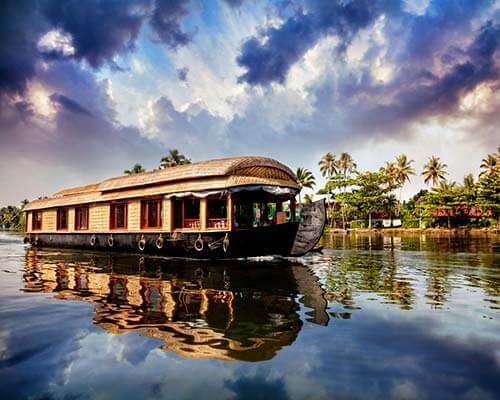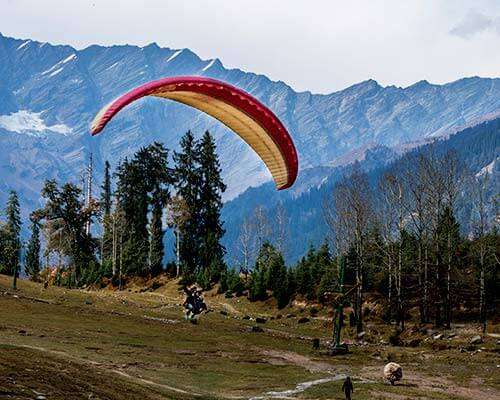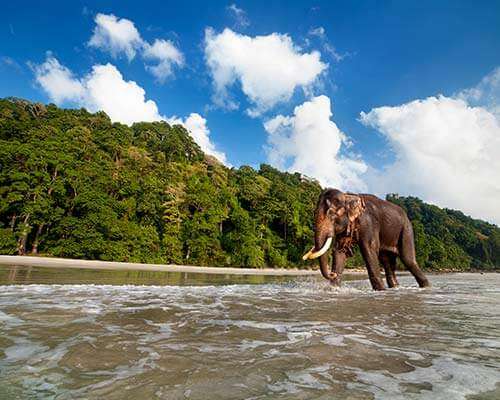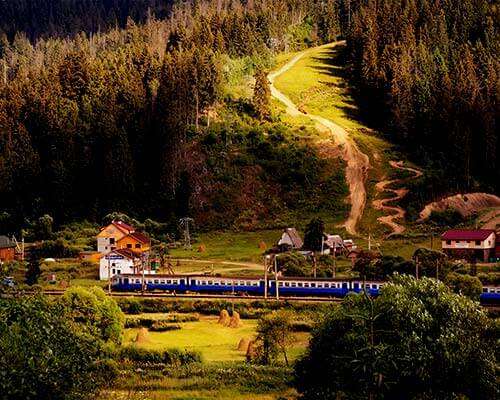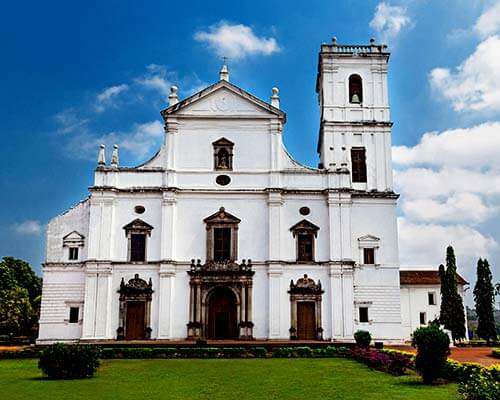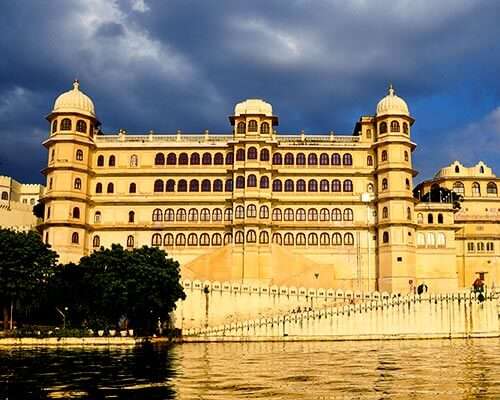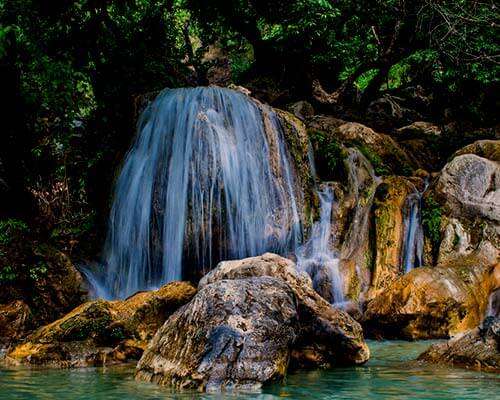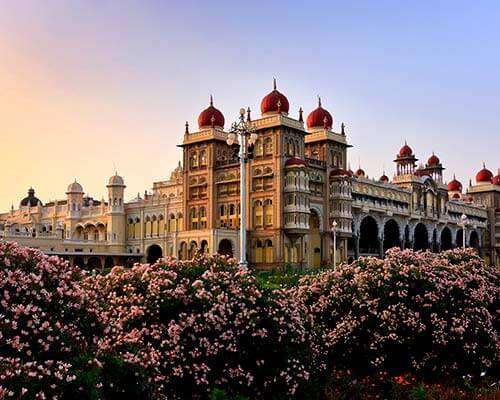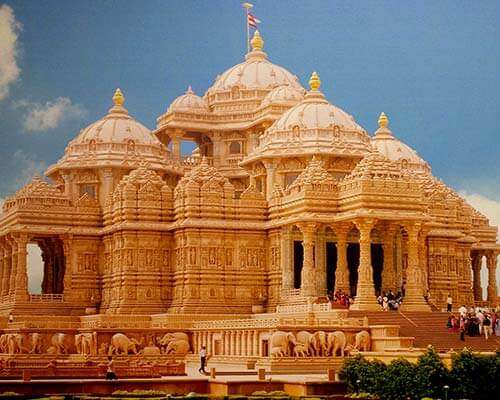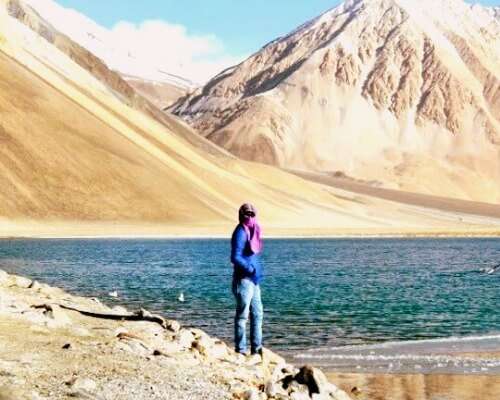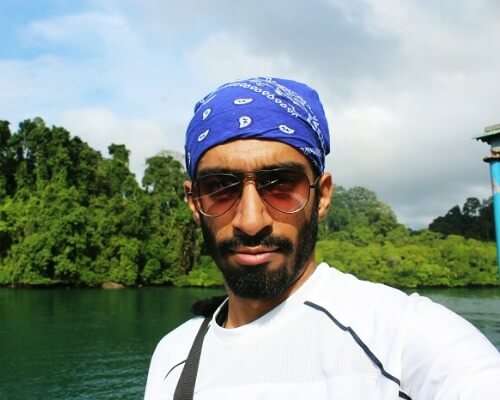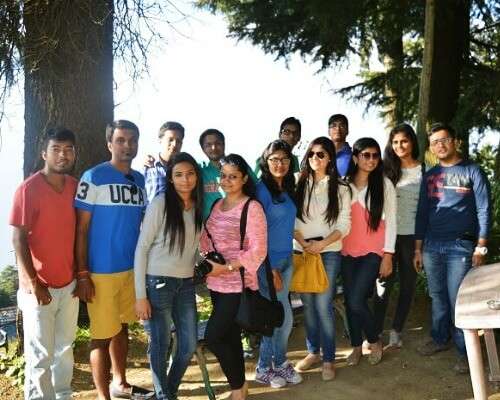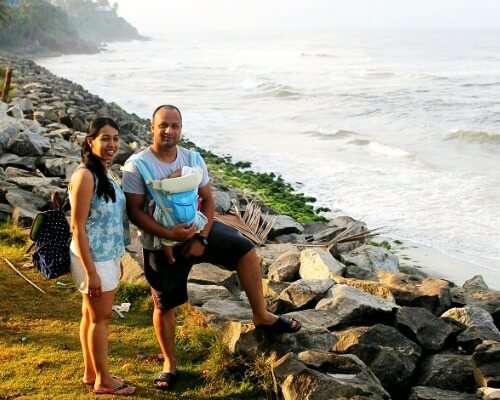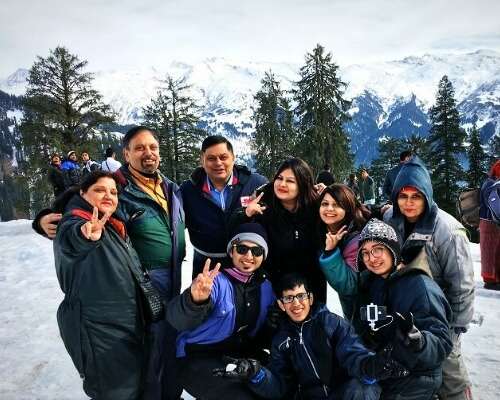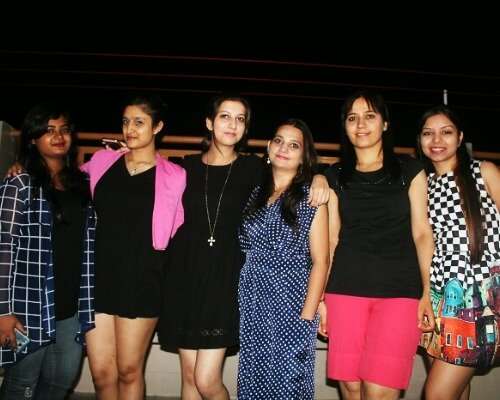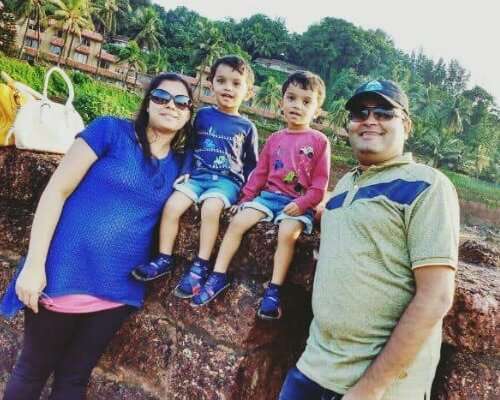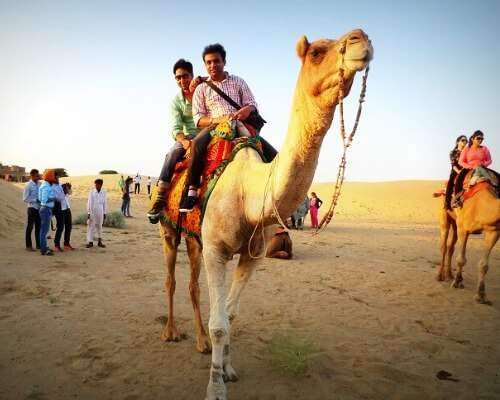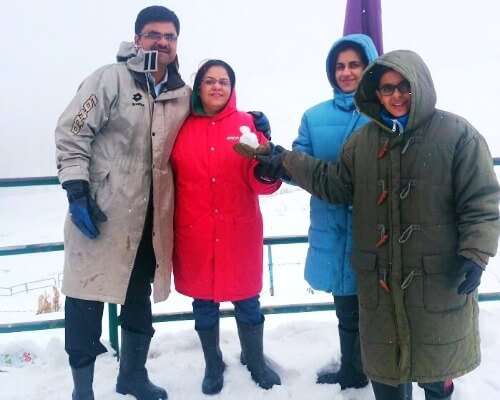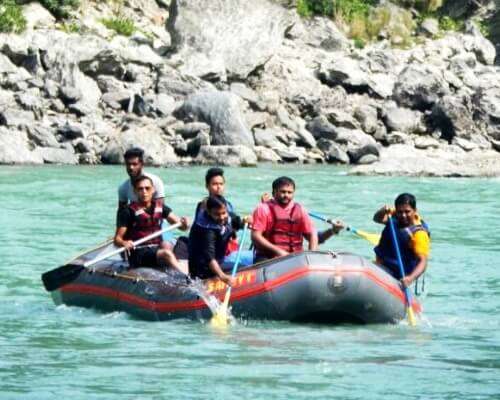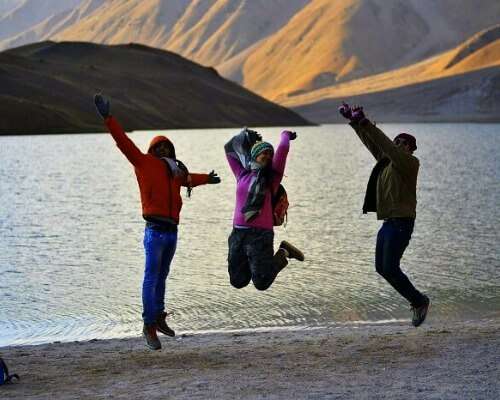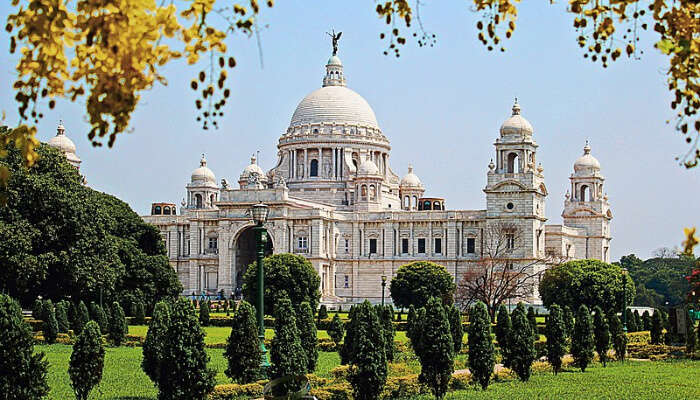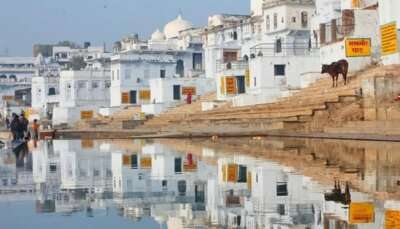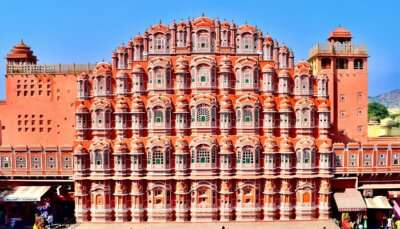43 Iconic Historical Places In India To Explore In 2025
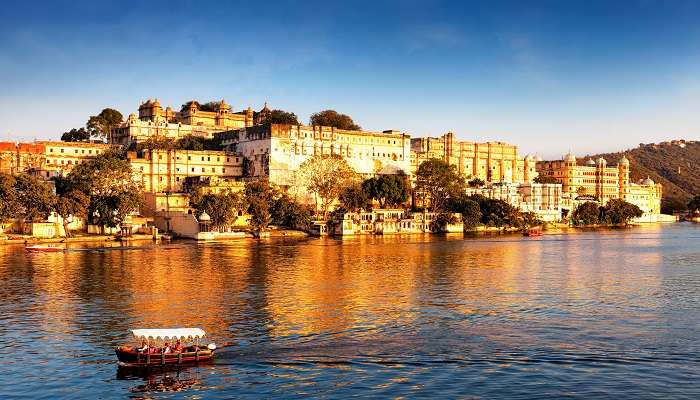
Opulent palaces, ancient forts and majestic structures greet you at every nook and corner of this majestic country, India. This rich history oozes out of all ancient structures and famous historical monuments and depicts tales of romance, bravery, strength and battles. Whether you are a history buff or an outdoor enthusiast, famous historical places in India transport you back to the past.
List Of 43 Most Famous Historical Places In India
The bygone era stays entrenched in society due to these ancient and historical places of India. So, if you are a history buff or want a taste of the rich culture of India, head over to explore some of India’s greatest historical monuments of all time!
- Taj Mahal: Majestic Mughal Marvel
- Agra Fort: Grand Mughal Fortress
- Red Fort: Iconic Mughal Stronghold
- Qutub Minar: Towering Delhi Landmark
- Humayun’s Tomb: Serene Mughal Mausoleum
- Fatehpuri Sikri: Abondoned Royal City
- Hawa Mahal: Stunning Palace Windows
- Khajuraho Temples: Intricate Erotic Sculptures
- Sanchi Stupa: Ancient Buddhist Monument
- Konark Temple: Sun Temple Masterpiece
- Mahabodhi Temple: Sacred Buddhist Site
- Rani ki Vav: Exquisite Stepwell Architecture
- Victoria Memorial: Colonial Grandeur Monument
- Jallianwala Bagh: Site Of Tragic Massacre
- Gwalior Fort: Imposing Desert Stronghold
- Golden Temple: Holiest Sikh Shrine
- India Gate: National War Memorial
- Mehrangarh Fort: Imposing Desert Stronghold
- Amer Fort: Majestic Hilltop Palace
- Kumbhalgarh Fort: Colossal Hill Fort
- Lakshmi Vilas Palace: Opulent Royal Residence
- Gateway of India: Iconic Colonial Archway
- Ajanta & Ellora Caves: Ancient Rock-cut Temples
- Charminar: Historic Hyderabad Landmark
- Mysore Palace: Royal Grandeur Of Karnataka
- Hampi: Ancient Ruins Of Vijaynagar
- Chola Temples: Architectural Marvels Of South
- Mahabalipuram: Ancient Coastal Monuments
- Chhatrapati Shivaji Terminus: Iconic Railway Station
- Gol Gumbaz: Towering Mausoleum Of Bijapur
- Cellular Jail: Symbol Of Colonial Oppression
- Elephanta Caves: Ancient Rock-Cut Marvels
- Jantar Mantar: Astronomical Marvels
- Golkonda Fort: Historic Fort Of Kings
- Bara Imambara: Grand Architectural Complex
- Meenakshi Amman Temple: Iconic Tamil Temple
- Halebidu: Exquisite Hoysala Architecture
- Chittorgarh Fort: Majestic Rajasthan Stronghold
- Nalanda University: Ancient Center Of Learning
- Churches & Convents Of Old Goa: Colonial Religious Heritage
- Orchha Fort: Royal Bundela Heritage
- Bhimbetka Rock Shelters: Prehistoric Cave Art
- Champaner Pavagadh Archaeological Park: Ancient Archaeological Site
1. Taj Mahal
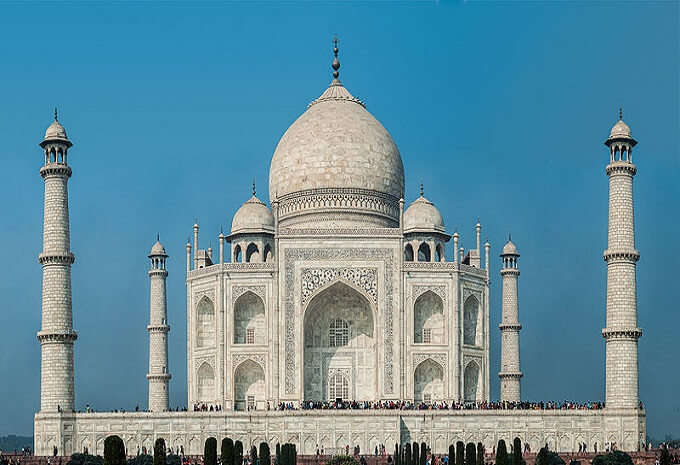
Discover Red Fort in Delhi which is one of the famous places in India. Meet the boss of Indian historical places. If you consider the top 10 historical places in India, Taj Mahal will always be ranking high in the list. Explore the ultimate epitome of love, the Taj Mahal, whose grandeur remains unmatched in history and today this is one of the weekend getaways from Delhi. This opulent white marble structure was commissioned to be built in 1632 by Shah Jahan for his late wife Mumtaz Mahal. It took around 22 years to complete this magnificent structure, which is considered one of the most famous historical places in India. According to local legend, it was believed that Shah Jahan cut off the hands of all the workers who built the Taj Mahal so that a similar monument could not be built.
Entry Fee: Indians- INR 40, Foreigners- INR 1000 Onwards, No entry below 15 years
Timings: 30 Minutes before sunrise and closes 30 Minutes before sunset
Best Time To Visit: February-April
Nearest Airport: Agra Airport
Interesting Fact: A shopping complex and hotel inspired by the Taj Mahal is being constructed in Dubai and is estimated to be four times larger in size.
Also Read: Places To Visit Near Taj Mahal
Looking To Book A Holiday Package?
2. Agra Fort
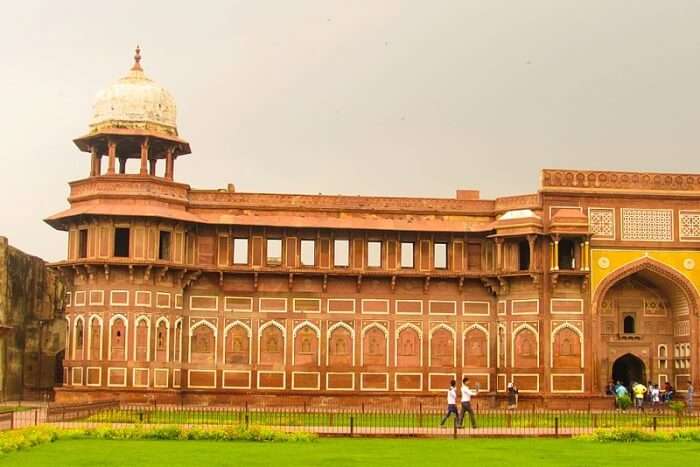
To get a sense of the rich history of the Mughal era, visit the walled palatial Agra Fort, one of the famous historical places in India that is built entirely of red sandstone. Built in 1565 by Akbar, this historical tourist place in India has two ornately designed gates: the Amar Singh Gate and the Delhi Gate. You can only enter through the Amar Singh Gate to uncover an ancient city filled with gateways, courts, passages, palaces and mosques. It is one of the most beautiful places to visit in Agra.
Entry Fee: Indians- INR 40, Foreigners- INR 550 Onwards
Timings: 6 am to 6 pm
Best Time To Visit: October to March
Nearest Airport: Agra Airport (Kheria Airport)
Interesting Fact: This fort was included in one of Sherlock Holmes’ cases, the ‘Sign of the Four’, and was also the location for the movie Jodha Akbar.
3. Red Fort
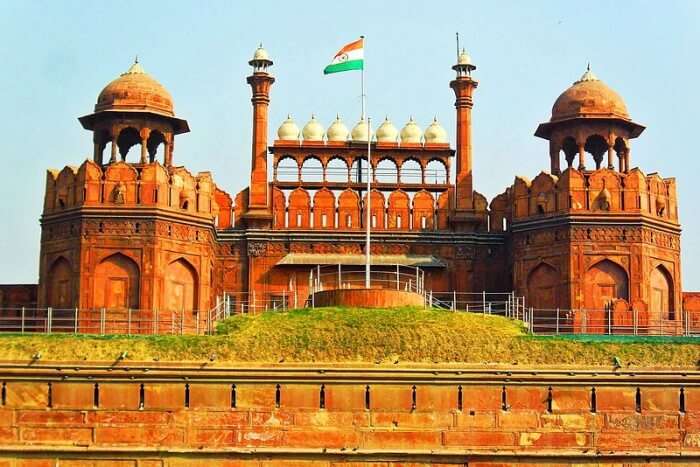
One of the historical tourist places in India, the Red Fort was constructed over ten years from 1638 to 1648. This fort was constructed when Shah Jahan shifted the capital from Agra to Delhi and it was then known as the Qila-e-Mubarak. This octagonal fort is one of the most famous historical places in north India and is also the site where the President gives his speech on Independence Day. The Red fort is truly remarkable and one of the best historical places in India.
Entry Fee: Indians- INR 10, Foreigners- INR 250 Onwards
Timings: 9:30 am to 4:30 pm daily (Closed on Mondays)
Best Time To Visit: November-March
Nearest Airport: Indira Gandhi International Airport
Interesting Fact: The Red fort was actually white as it was made of limestone. The British painted it red when the limestone started chipping off.
Related Post: Places To Visit Near Red Fort
4. Qutub Minar
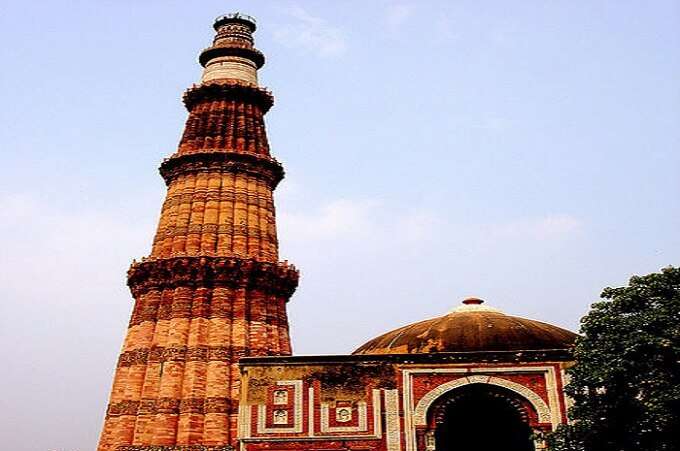
Regarded as the site of the first Muslim kingdom in Northern India, the Qutub Minar is definitely one of the most historical sites in India. It is one of the finest examples of Indo-Muslim architecture with its intricate red sandstone storeys. These are dotted with carvings and verses from the Quran and are mostly in Arabic and Nagari. Qutub Minar is one of the famous historical places in India and is said to have got its name from Qutb-ud-din Aibak who was the first Muslim ruler of North India. The first mosque in India Quwwat-ul-Islam Masjid is also located at the foot of the Qutub Minar. So, if you are looking for famous historical places in India, you know where to head to- Qutub Minar.
Entry Fee: Indians- INR 10, Foreigners- INR 250 Onwards
Timings: 7 am to 5 pm
Best Time To Visit: October-February
Nearest Airport: Indira Gandhi International Airport
Interesting Fact: The Qutub Minar complex has an iron pillar that has not rusted even after 2000 years.
5. Humayun’s Tomb, Delhi

A beautiful synthesis of Indian and Persian architecture, Humayun’s Tomb is one of the most famous and important places in India. Humayun’s wife Hamida Banu Begum commissioned the building of this tomb for her husband in the 15th century. Arched alcoves, beautiful domes, elaborate corridors and kiosks – all make this monument a grandeur of Indian architecture. There is also a barber’s tomb at the southwestern side of the main tomb. It is one of the most famous tourist places in Delhi that one should certainly visit.
Entry Fee: Indians- INR 40, Foreigners- INR 510 Onwards
Timings: 7 am to 7 pm (Closed on Fridays)
Best Time To Visit: October to March
Nearest Airport: Indira Gandhi International Airport (Delhi Airport)
Interesting Fact: Humayun’s Tomb was one of the main inspirations for the Taj Mahal.
Related Post: Things To Do In Delhi
6. Fatehpuri Sikri, Uttar Pradesh
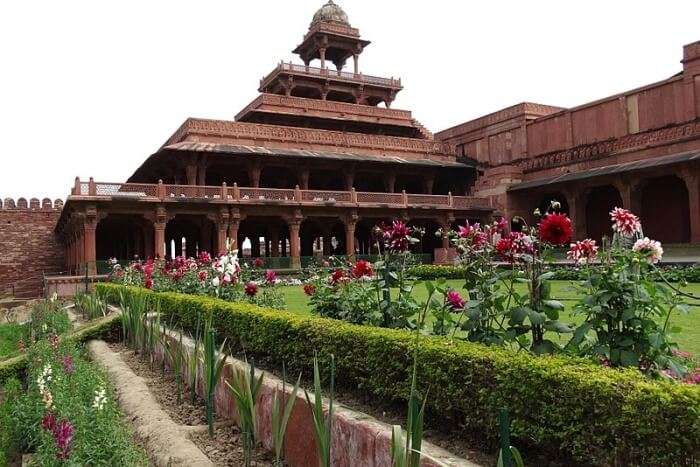
The royal city of Fatehpur Sikri was once the capital of the Mughal era during Akbar’s reign. This royal city is one of the historical tourist places in India and once had palaces, public buildings, mosques, quarters for the king, the army as well as the servants. Further, the well planned royal city with carved columns and decorated pillars was built between 1571-1573 AD and abandoned due to a shortage of water.
Entry Fee: Indians- INR 40, Foreigners- INR 510 Onwards
Timings: 6 am to 6 pm (Closed on Fridays)
Best Time To Visit: October to March
Nearest Airport: Agra Airport (Kheria Airport)
Interesting Fact: Many barren women would come to the tomb of the Sufi saint Salim Chisti to pray for children.
7. Hawa Mahal, Jaipur
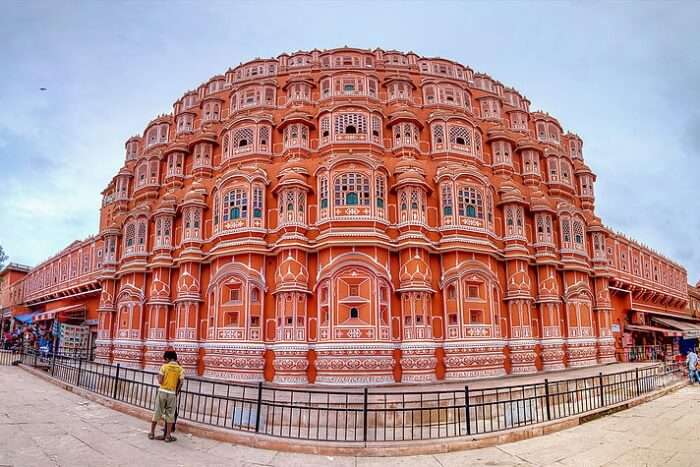
The ‘Palace of Winds’ or Hawa Mahal gets its name due to the fact that it looks like a honeycomb of a beehive with its 953 intricate windows. It is also shaped like a crown as the ruler who built it, Maharaja Sawai Pratap Singh, was a major devotee of Lord Krishna. This magnificent attraction is one of the popular tourist places in Jaipur and is among the India’s famous buildings due to its curved architecture. It is also known as the tallest building in the world that doesn’t have any foundation. The palace is curved but still stands firm due to its pyramidal shape.
Entry Fee: Indians- INR 10, Foreigners- INR 50 Onwards
Timings: 9.30 am to 4.30 pm
Best Time To Visit: November-February
Nearest Airport: Jaipur Airport
Interesting Fact: It was believed that this building was created so that the royal ladies could look outside as they were constantly under ‘purdah’
Related Post: Jaipur Travel Tips
8. Khajuraho Temples
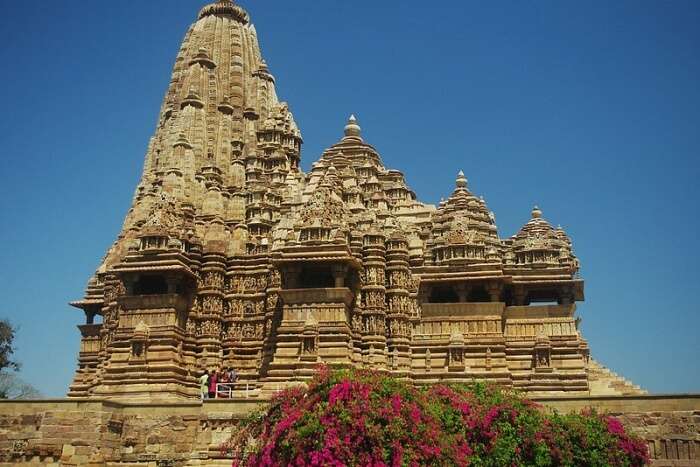
Khajuraho has always been thought of as the place that exemplifies sensuality and eroticism at its best. However this is a misrepresentation as only about 10 percent of the sculptures are sensual and the rest are common depictions. Countless sculptures depicting love, eternal grace, beauty, delicacy and the creative arts can be seen in one of the most historical places in India. A perfect amalgamation of Hinduism and Jainism, Khajuraho Temples have carvings of cult icons, demi gods and Apsaras.
Entry Fee: Indians- INR 10, Foreigners- INR 250 Onwards
Timings: 8 am to 6 pm
Best Time To Visit: October-February
Nearest Airport: Khajuraho Airport
Interesting Fact: The city got its name as it was adorned with date palms and “Khajura’ means date palms in Hindi. It was also often called Khajjurpura in ancient times.
9. Sanchi Stupa, Madhya Pradesh
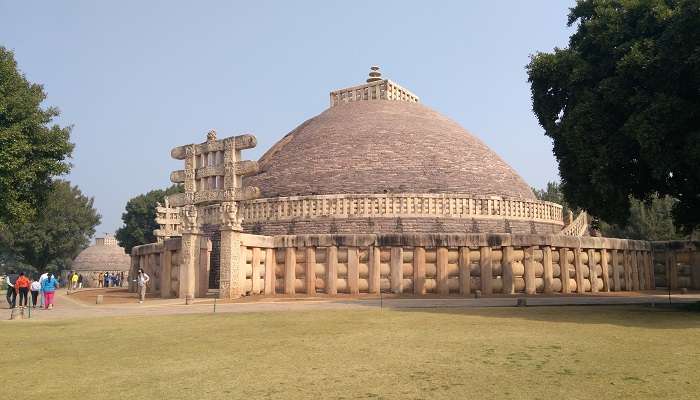
Unearth one of the most religious centers of Buddhism at the Sanchi Stupa that houses relics of the Buddha. This famous historical place in India was built by Lord Asoka in the 3rd century B.C for Emperor Ashoka. The Dome of the Stupa signifies the wheel of law and this stupa is actually considered as a symbol of Buddha’s freedom the circle of life and death (Moksha). The four gateways of the Stupa have various scenes from the Jataka tales and stories of Buddha’s life.
Entry Fee: Indians- INR 10, Foreigners- INR 250 Onwards
Timings: 8.30 am to 5 pm
Best Time To Visit: October to March
Nearest Airport: Bhopal Airport (Raja Bhoj Airport)
Interesting Fact: The relics of Buddha were painted with a Mauryan polish to make them glow like glass.
Related Post: Hotels Near Sanchi Stupa
10. Konark Temple
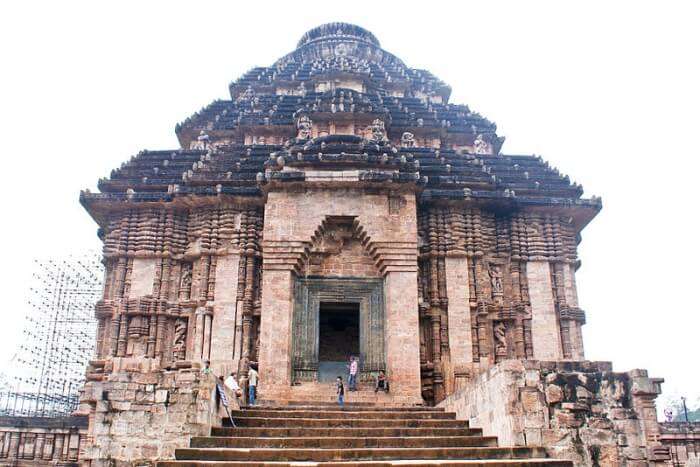
Built by the great ruler of the Ganga dynasty – King Narasimhadeva I, along with 1200 artisans, the Konark Temple is magic set in stone. Located on the coast of the Bay of Bengal, this temple signifies the exquisite detailing of ancient architecture and is one of the famous historical places in India. A particularly interesting feat is at the temple entrance, where two lions are shown crushing elephants, and a human body lies at the foot of the elephant.
Entry Fee: Indians- INR 10, Foreigners- INR 250 Onwards
Timings: 10 am to 5 pm ( Closed on Fridays)
Best Time To Visit: October to March
Nearest Airport: Biju Patnaik International Airport (Bhubaneswar)
Interesting Fact: The 12 wheels at the temple’s base are sundials that accurately denote time.
11. Mahabodhi Temple
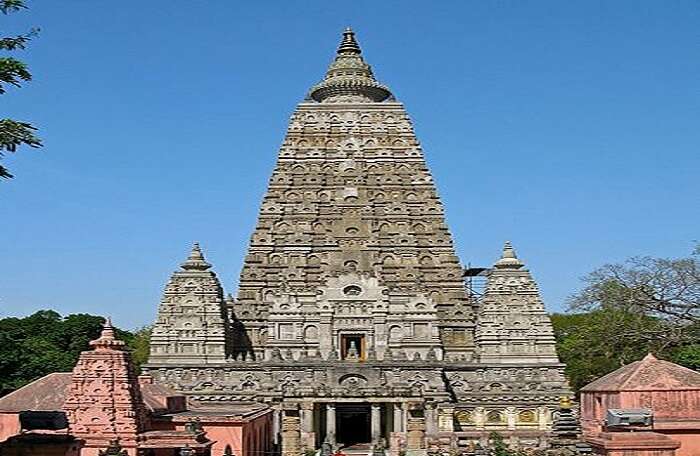
Visit the Mahabodhi temples, which are one of the four holy grounds of Buddhism. This is the spot where the Buddha is said to have attained enlightenment while meditating under a fig tree. The Bodhi tree is the descendant of the Fig tree and lies just near the temple. The earliest temple was built by Ashoka in the 3rd century BC. The temple has a massive statue of Buddha touching the earth with their right hand.
Entry Fee: Free for Indians
Timings: 5 am to 9 pm
Best Time To Visit: October-March
Nearest Airport: Gaya Airport
Interesting Fact: The Bodhimanda is the spot under the Bodhi tree where the Buddha attained enlightenment. It is believed that this spot will be the last to disappear when the world ends and the first to reappear when the world is recreated.
Related Post: Places To Visit In Bodh Gaya
12. Rani ki Vav
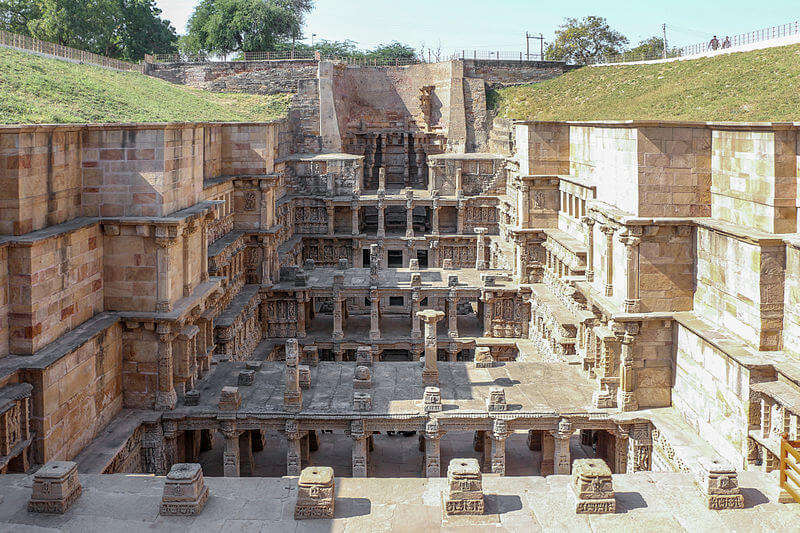
You will feel like an ant climbing down an anthill when you explore the Rani ki Vav stepwell as it is a massive structure that is around 24 meters deep. One of the most unexplored historical places in India, this stepwell was built in the 11th century AD as a memorial for King Bhimdev of the Solanki dynasty by his wife, Queen Udayamati. The lowest level of the stepwell was earlier used as a route to escape to neighbouring villages. It is one of the most beautiful places to visit in Gujarat.
Entry Fee: Indians- INR 5, Foreigners- INR 135 Onwards
Timings: 8 am to 6 pm
Best Time To Visit: October to March
Nearest Airport: Sardar Vallabhbhai Patel International Airport (Ahmedabad)
Interesting Fact: The stepwell was buried under silt for years, until it was rediscovered in 1940.
13. Victoria Memorial
The Victoria Memorial in Kolkata is one of the most historical tourist places in India. It was built during the peak of the British era. The then Viceroy Lord Curzon laid down the idea of this monument but its actual design was done by Sir William Emerson.
Multitudes of lush gardens, a museum filled with British memorabilia including weapons, paintings, sculptures, artefacts, etc and a royal portrait of the Queen are what you will find in this beautiful monument. One of the best paintings you will find here is the one by Russian artist Vasili Verestchagin. This painting depicts the Prince of Wales in Jaipur in 1876.
Entry Fee: Indians- INR 30, Foreigners- INR 200 Onwards
Timings: 5:30 am to 6:15 pm daily
Best Time To Visit: November-February
Nearest Airport: Netaji Subhash Chandra Bose International Airport
Interesting Fact: There are two sets of mysterious inscriptions on the monument. ‘VRI’ and the other is ‘Dieu Et Mon Droit’. The first means Victoria Queen and Empress and the latter means ‘God and my right’.
Related Post: Historical Places In Kolkata
14. Jallianwala Bagh
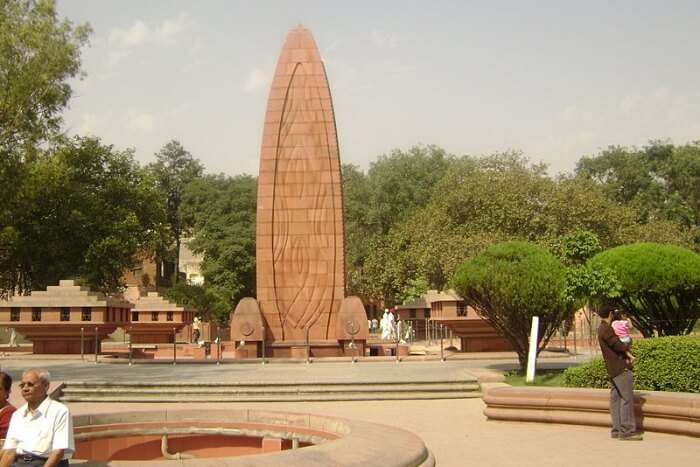
The infamous Jallianwala Bagh massacre took place near this monument near the Golden Temple in Amritsar. Covering around 6.5 acres, it is the place where General Dyer ordered a mass shooting on Baisakhi. Thousands of innocents succumbed to death in this incident. It was one of the incidents that ignited the fire of Independence revolution. A memorial was erected here on 13th April 1961 by the then president, Dr. Rajendra Prasad.
Entry Fee: Free
Timings: 6:30 am to 7:30 pm
Best Time To Visit: All year round
Nearest Airport: Sri Guru Ram Das Jee International Airport
Interesting Fact: The infamous Jallianwala Bagh Massacre took place here
15. Gwalior Fort
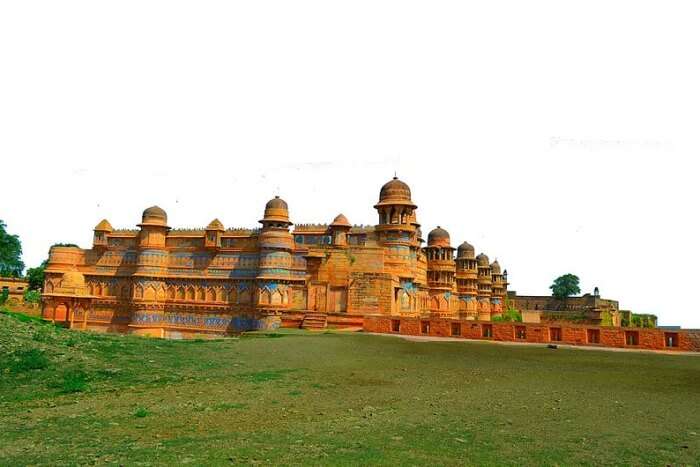
A legendary fort of its time, Gwalior Fort has been around for a long time. Some sources suggest that it was constructed in or before 6 century Mughal Emporer Babur described this place to be a pearl among Indian fortresses. The second oldest reference to the number zero can be found here. Situated in the historic city of Gwalior, it is the part of the identity of the city that has seen many dynasties come and go.
Entry Fee: INR 75/adult Onwards, Free for those below 15 years
Timings: 6:00 am to 5:30 pm
Best Time To Visit: All year round
Nearest Airport: Gwalior Airport
Interesting Fact: Second oldest reference to number zero is carved here, it was constructed in the 6th century.
Related Post: Places To Visit In Gwalior
16. Golden Temple
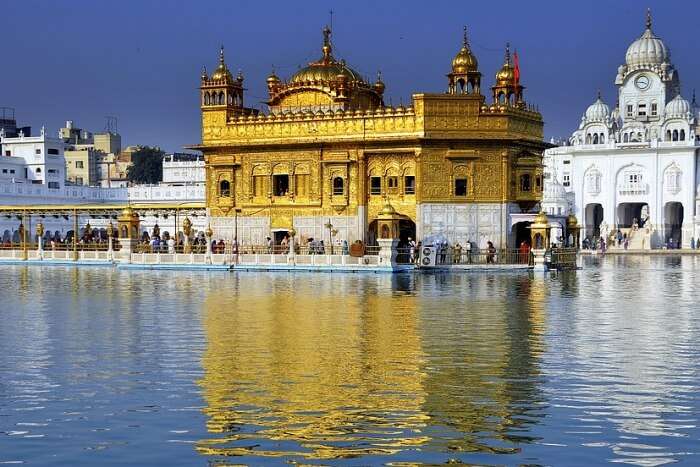
One of the most famous Gurudwara in the entire world, Sri Harmandir Sahib is one of the important spiritual places in India. While it has been around for a long while, it was rebuilt with pure gold and marble in 1830 by Maharaja Ranjit Singh. Located in the heart of Amritsar, it is visited by more than a hundred thousand pilgrims every day. It is considered one of the top five historical monuments of India and a must-visit attraction for those who are seeking the best of all in India.
Entry Fee: Free
Timings: Changes every month
Best Time To Visit: October to March
Nearest Airport: Sri Guru Ram Das Jee International Airport
Interesting Fact: Each day, over a hundred thousand people partake in the Langar here
17. India Gate

This 42-meter monument is among the famous historical monuments of India and often compared with the Arch de Triomphe in Paris and the Arch of Constantine in Rome. Located on the Rajpath, it was designed by Edwin Lutyens. Dedicated to the 82,000 soldiers of both Indian and British descent who fought in World War One and 13,300 soldiers who were martyred in the 3rd Anglo-Afghan War, it was built in 1931. Every year, the Republic Day Parade is held here. It is a famous destination among both locals and tourists.
Entry Fee: Free
Timings: All the time
Best Time To Visit: November-February
Nearest Airport: Indira Gandhi International Airport
Interesting Fact: It is dedicated to nearly 1 lakh soldiers who perished in two wars, namely WW I and the Third Anglo-Afghan War. It is the spot where Amar Jawan Jyoti – the eternal flame- continues to burn.
Related Post: Places to Visit Near Delhi
18. Mehrangarh Fort
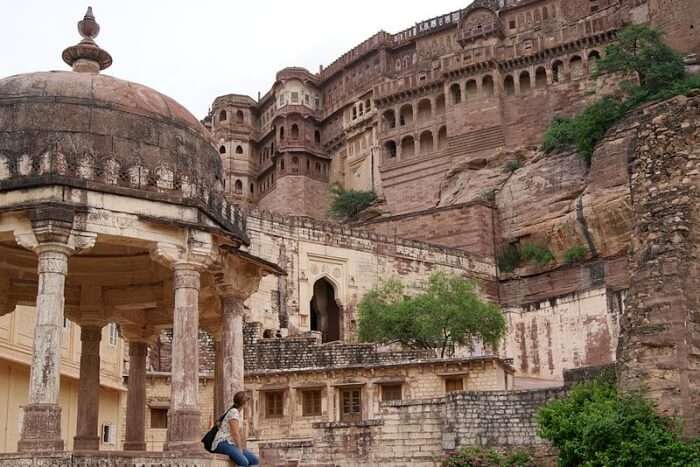
It is one of India’s biggest forts, commissioned by Rao Jodha in 1459. There are 7 entrances in the complex, which is nestled on a hill. Each gate was constructed at different times for different purposes. For example, the Vijay Gate was built to mark King Man Singh’s win over Bikaner and Jaipur. There is a Rose Palace and a Glass Palace within the complex. This fort has also been featured in several Bollywood and Hollywood movies. It is one of the top five historical monuments of India where visitors can explore the finest palaces and preserves to get an essence of Indian history, culture, and traditions.
Entry Fee: Indian Citizens: INR 70 (without an audio guide); Others: INR 700 (With Audio) Onwards
Timings: 9 am to 5 pm
Best Time To Visit: November-February
Nearest Airport: Jodhpur Airport
Interesting Fact: It is situated at an elevation of 410 m
19. Amer Fort
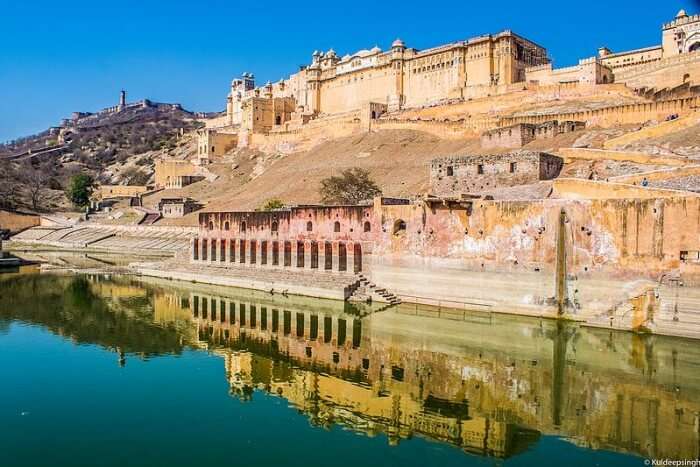
Only 11 km from the Pink City Jaipur, Amer Fort is one of the most magnificent forts in India. Built by Maharaja Man Singh in 1592, it was truly the residence of kings. Another UNESCO site in the heart of Rajasthan. Made of yellow and pink sandstone, it is an unforgettable sight. Over 5 thousand people visit this fort daily, making it one of the most visited places in Jaipur.
Entry Fee: Indian Adults INR 25, Indian Students INR 10, Foreigners INR 200
Timings: 9 am to 6 pm
Best Time To Visit: October-December
Nearest Airport: Jaipur Airport
Interesting Fact: King Man Singh I was one of the most decorated generals of King Akbar
Related Post: Jaipur One Day Itinerary
20. Kumbhalgarh Fort
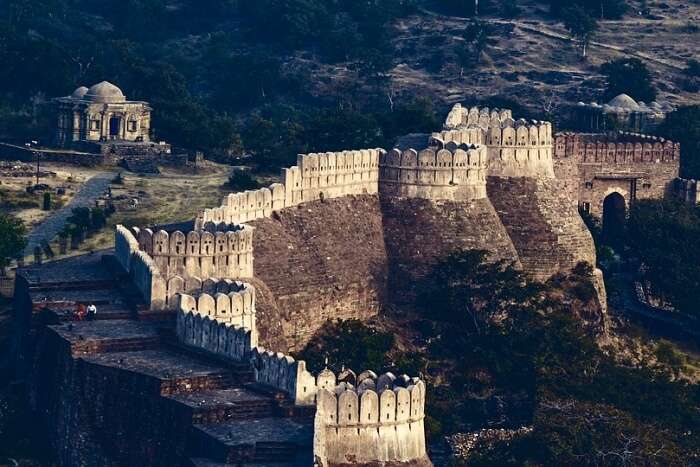
Another famous fort in Rajasthan is famous for its majestic fort as well as the wildlife sanctuary. Built by King Kumbha, it falls under the care of the district of Rajasamand. It is also only 82 km from Udaipur, making it a great day trip if you are in the city. It is one of the famous historical monuments of India due to the magnificent structure of the palace.
Entry Fee: Starting at INR 15 for nationals and SAARC tourists, INR 200 for the rest
Timings: 9 am to 5 pm
Best Time To Visit: October to March
Nearest Airport: Udaipur Airport (Maharana Pratap Airport)
Interesting Fact: The walls of Kumbhalgarh are the second longest in the world after the Great Wall of China
21. Lakshmi Vilas Palace
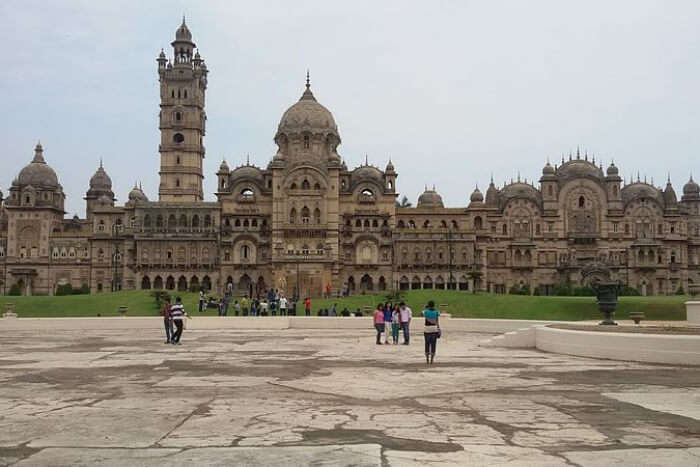
It was built by the prestigious Gaekwad family, who ruled Baroda. Initially a part of Sarkar Wada, Lakshmi Vilas Palace was built in 1890 by Maharaja Sayajirao Gaekwad. The palace is one of a kind with Indo-Saracenic architecture. The interiors are European-inspired, and the grounds have a golf course that was used to entertain British guests. It remains one of the unknown historical places in India.
Entry Fee: INR 150 for the palace and INR 60 for the museum Onwards
Timings: 9 am to 5 pm
Best Time To Visit: October to March
Nearest Airport: Vadodara Airport (Civil Airport)
Interesting Fact: The Lakshmi Vilas is four times the size of Buckingham Palace and is said to be the largest private residence to be built at that time.
Related Post: Things To Do In Vadodara
22. Gateway Of India
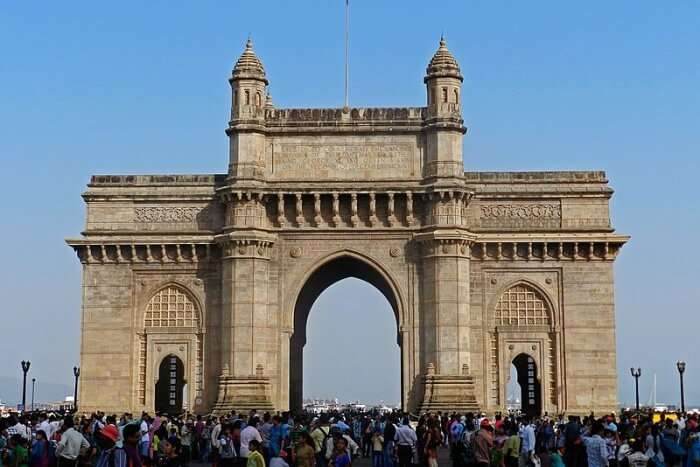
Built as an access point for entry and exit during the British period, the Gateway of India is one of the important places in India. This ancient gateway was completed in 1924 and was inaugurated by The Viceroy, the Earl of Reading. It has been reinforced over time using yellow basalt and concrete and has delicate latticework all over the turrets. The statues of Chhatrapati Shivaji and Swami Vivekananda were also installed at the Gateway later on. So, what are you waiting for? Add Gateway of India to the list of famous historical places in India.
Entry Fee: Free
Timings: 12 am – 12 pm
Best Time To Visit: All year round
Nearest Airport: Chhatrapati Shivaji International Airport
Interesting Fact: The last of the British ships set sail for England from the Gateway of India in the 20th century.
23. Ajanta & Ellora Caves

The Ajanta-Ellora Caves depict true craftsmanship skills where each rock carving was done by hand. When British officer John Smith set out to chase a tiger in 1819, he would never have thought that he would uncover the majestic Ajanta caves. These 29 caves are full of sculptures and paintings that epitomize Buddha and various Jataka tales.
Blending three different religions: Buddhism, Jainism and Brahmanism, the 34 caves at Ellora have been carved on the walls of a basaltic hill. There are 12 Buddhist caves, 17 Hindu caves and 5 Jain caves. Most of these caves are monasteries that were used for praying and studying.
Entry Fee: Indians- INR 10, Foreigners- INR 250 Onwards
Timings: 9 am to 5.30 pm ( Ajanta caves are closed on Mondays & Ellora caves are closed on Tuesdays)
Best Time To Visit: June-March
Nearest Airport: Aurangabad Airport
Interesting Fact: It is believed that Buddhist monks were not allowed to go out during the monsoon season, and they would sit and carve sculptures in the Ajanta Caves.
Related Post: Places To Visit In Aurangabad
24. Charminar
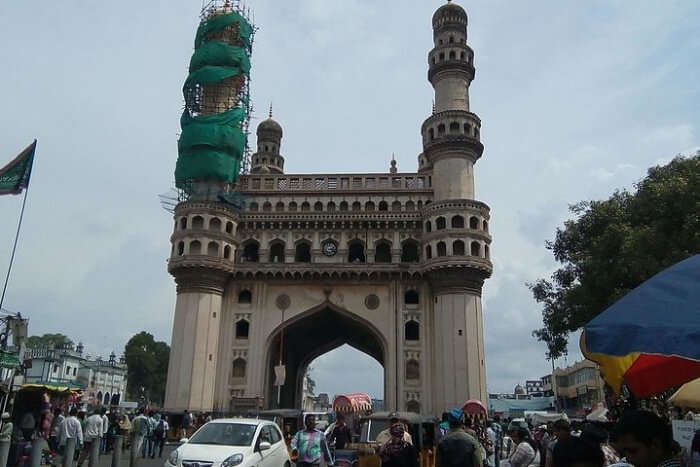
It was believed that Muhammad Quli Qutb Shah built the Charminar in 1591 to honor Allah. However, in reality, this historical tourist place in India was built to signify the end of the plague in the city. Legend has it that there is a secret tunnel from the monument to Golconda Fort, but it hasn’t been discovered to date. Each minaret of this monument has four stories, and every arch has one clock.
Entry Fee: Indians- INR 5, Foreigners- INR 100 Onwards
Timings: 9.30 am to 5.30 pm
Best Time To Visit: All year round
Nearest Airport: Rajiv Gandhi International Airport
Interesting Fact: There is a cat’s head in one of the arches in order to ward off rats that once almost destroyed Hyderabad.
25. Mysore Palace
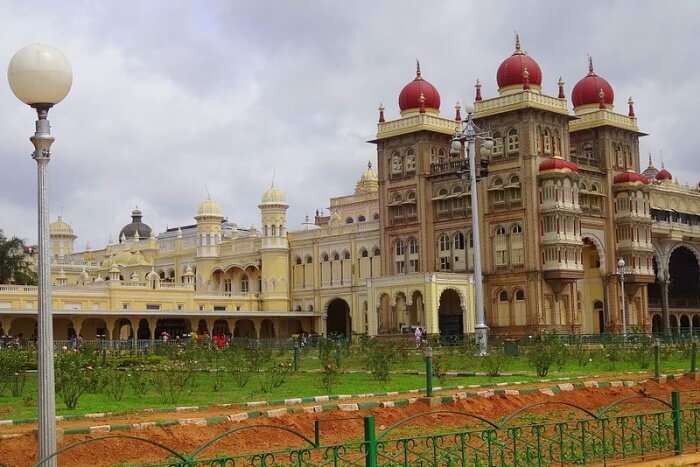
Once the royal abode of several rulers, the Mysore Palace is now a museum with all the royal pictures, clothing and artefacts of the Wodeyar dynasty. This palace is one of the most historical places in India and is frequently visited by several tourists. The palace was built and refined by several emperors throughout the years and is thus an amalgamation of Hindu, Rajput, and Mughal styles, making it one of India’s heritage destinations. Glazed tiles, chandeliers, and iron pillars adorn the pavilion inside the temple that is used to host royal weddings.
Entry Fee: Indians- INR 40, Foreigners- INR 200 Onwards
Timings: 10 am to 5.30 pm (Closed on Sundays and govt holidays)
Best Time To Visit: October to March
Nearest Airport: Mysore Airport (Mandakalli Airport)
Interesting Fact: The Maharajas used to earlier sit on a Golden palanquin that was then carried by elephants during the Dasara festival. Goddess Durga’s idol is now placed inside the palanquin.
Related Post: Places To Visit Near Mysore Palace
26. Hampi
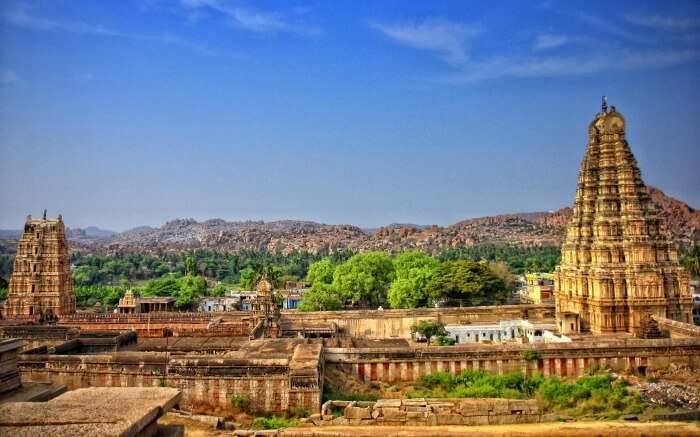
Hampi’s rocky outcrops, chariot structures, gopurams, elephant stables, ornate halls – all depict the tale of one of the greatest Hindu kingdoms. It is believed that Lord Rama and his brother visited this historical place to search for Sita. They took the help of the two brothers Bali and Sugriv who ruled this region then. This UNESCO World Heritage Site is one of the most famous historical places in South India and was also the region where Vijayanagara’s main coin mint was situated.
Entry Fee: Indians- INR 10, Foreigners- INR 330 Onwards
Timings: 10 am to 5 pm (closed on Fridays)
Best Time To Visit: October to March
Nearest Airport: Hubli Airport (about 160 km from Hampi) or Bengaluru Airport (around 340 km away)
Interesting Fact: The first instance of human settlement recorded here dates all the way back to 1 CE.
27. Chola Temples
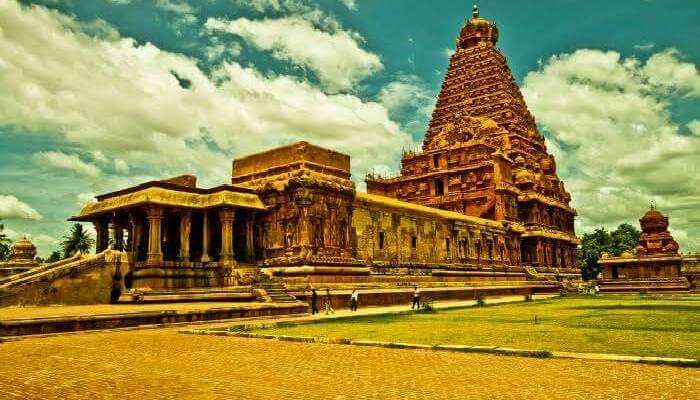
Get set to undertake an adventurous journey back in time by visiting the trio of three great Chola Temples: Brihadeshwara Temple at Tanjore, Airavateshwara Temple in Darasuram, and Brihadeeshwara Temple in Gangaikonda Cholapuram. The three temples were built by the kings of the Chola dynasty, which was one of the greatest kingdoms of South India. The ones at Tanjore and Cholapuram were built in the 11th century, while the one at Darasuram was built in the 12th century.
Entry Fee: None
Timings: 6.30 am to 8.30 pm (The temples are shut from 12 pm to 4 pm)
Best Time To Visit: October to March
Nearest Airport: Tiruchirappalli International Airport
Interesting Fact: Raja Raja Cholan was inspired to build the Brihadeshwara Temple, at Tanjore due to his dream while visiting Sri Lanka.
Related Post: Offbeat Places In Tamil Nadu
28. Mahabalipuram
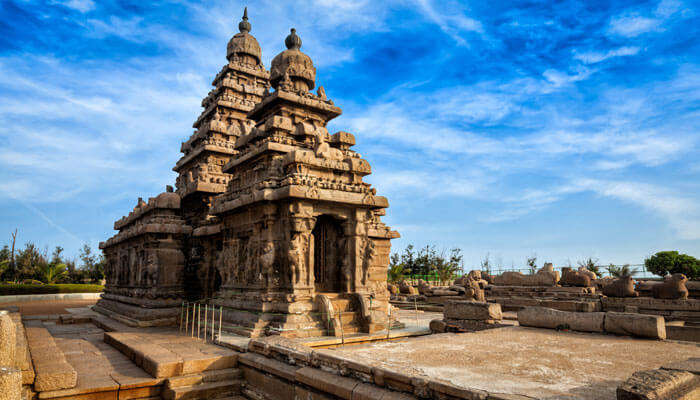
Dravidian-style temples dotted with innumerable sculptures are the major attractions of Mahabalipuram. The stone carvings display Pallava art and took over 200 years to create making this one of the most ancient historical places in India.
11 temples called Mandapas lie on both sides of the hills at Mahabalipuram and have both Dravidian style architecture and several Buddhist elements. The Shore Temple, Arjuna’s Penance and the Cave temples are some of the most popular tourist attractions of this region.
Entry Fee: Indians- INR 10, Foreigners- INR 350 Onwards
Timings: 6 am to 6 pm
Best Time To Visit: November to March
Nearest Airport: Chennai International Airport
Interesting Fact: The ‘Descent of the Ganges’ has been carved from pink granite and displays how Lord Shiva made the water of the Ganges descend from the heavens onto the earth.
29. Chhatrapati Shivaji Terminus
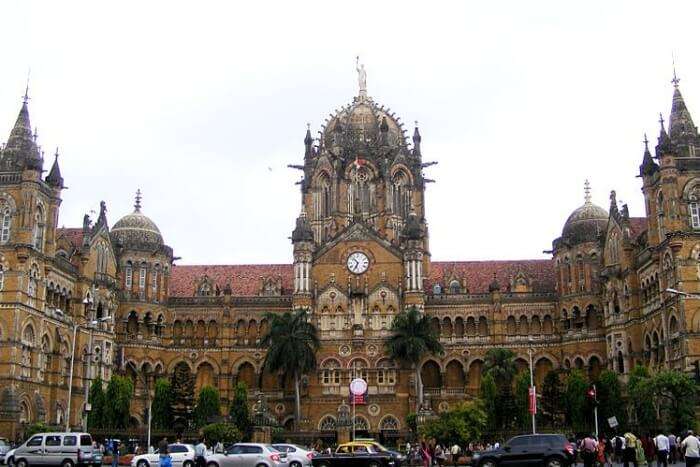
A UNESCO world heritage site in India that features a Victorian-Gothic style of architecture. Chhatrapati Shivaji Terminus is a railway station in Mumbai, the capital of Maharashtra. Constructed in 1887, it is the headquarters of Central Railways. An iconic landmark of the financial hub of India, it looks timeless when compared with the rest of Mumbai. It is one of India’s famous buildings with domed arches and buttresses from where various long-distance and short-distance trains begin.
Entry Fee: Free
Timings: Always
Best Time To Visit: October to March
Nearest Airport: Chhatrapati Shivaji Maharaj International Airport
Interesting Fact: It was built to commemorate the 50th birthday of Queen Victoria and took 10 years to be completed
Related Post: Mumbai Travel Tips
30. Gol Gumbaz, Karnataka
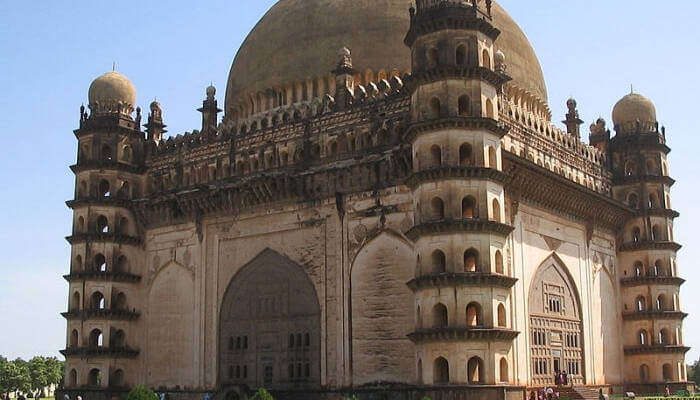
Created in 1656, Gol Gumbaz is the mausoleum of the seventh ruler of the Adil Shah Dynasty, Mohammed Adil Shah. Gol Gumbaz literally means ‘circular dome’ and is maintained by ASI (Archaeological Survey of India). It took 30 years to be built and is one of the most important places to visit in Kerala. It was designed by Yaqut of Dabul and also houses the wives and daughters of the Sultan of Bijapur.
Entry Fee: Indians: INR 10, Foreigners: INR 100 Onwards
Timings: 10 am to 5 pm
Best Time To Visit: October to March
Nearest Airport: Bijapur Airport (about 30 km away) or Hubli Airport (approximately 165 km away)
Interesting Fact: Made from Dark Grey Basalt with a Deccan Indo-Islamic style of architecture, it is known as the Taj Mahal of South India
31. Cellular Jail
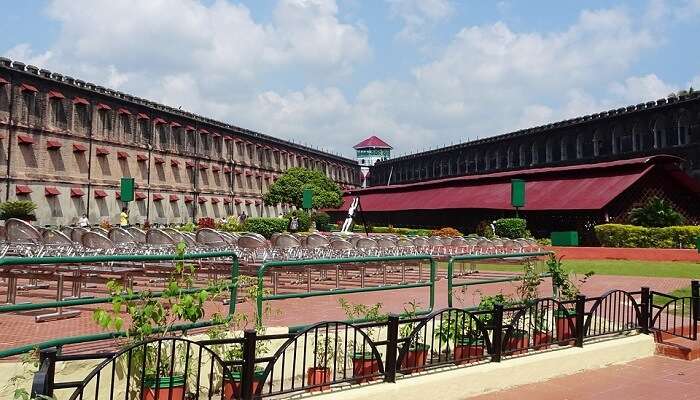
Cellular Jail is one of the most popular attractions in Port Blair. The jail is stranded on a secluded island and was used by Britishers to punish miscreants. Cellular Jail means Kala Pani, which translates to exile till death. Now, the colonial prison has been turned into an attraction where people get a glimpse of prisoners’ lives where they were treated in inhumane conditions. It is worth a visit if you are visiting Andaman & Nicobar Islands.
Entry Fee: INR 30 Onwards
Timings: 9 am to 1 pm, 2 pm to 5 pm, Monday closed
Best Time To Visit: October to March
Nearest Airport: Veer Savarkar International Airport (Port Blair Airport)
Interesting Fact: Freedom fighters like Batukeshwar Dutt and Veer Sawarkar were imprisoned here during the time of the Independence struggle.
Related Post: Places To Visit In Port Blair
32. Elephanta Caves
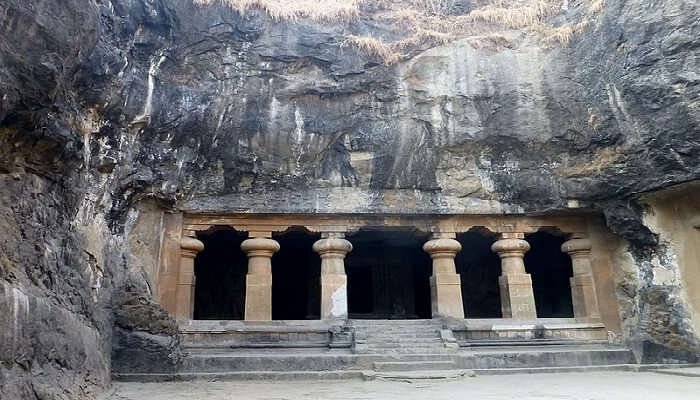
Elephanta Caves have been recognized as a UNESCO World Heritage Site. the cave depicts the rock-cut art and architecture from medieval times in India. The caves date back to the 5th and 7th century. The caves are basically divided into two groups. The first group is the five Hindu Temples and the second group is of two Buddhist caves.
Entry Fee: INR 10 for Indians, INR 250 for foreigners
Timings: 9 am to 5:30 pm
Best Time To Visit: October to March
Nearest Airport: Chhatrapati Shivaji Maharaj International Airport (Mumbai Airport)
Interesting Fact: The ferry ride to the caves from Mumbai is an interesting one
33. Jantar Mantar
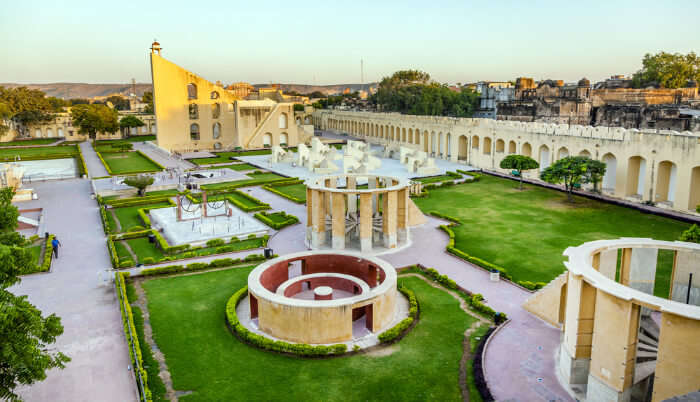
How can you not know about Jantar Mantar in Jaipur? It is the largest astronomical observatory in the world and one of the best historical places of India. The place was built by Raja Sawai Madho Singh in the 18th century as he was a big fan of science. There are instruments in the observatory that are placed in such a way that they tell you the position of heavenly bodies.
Entry Fee: Starting at INR 15 for students, INR 200 for foreigners
Timings: 9 am to 4:30 pm
Best Time To Visit: November to February
Nearest Airport: Jaipur International Airport (Sanganer Airport)
Interesting Fact: Jantar Mantar has the world’s largest sundial.
Related Post: Jaipur Travel Tips
34. Golkonda Fort
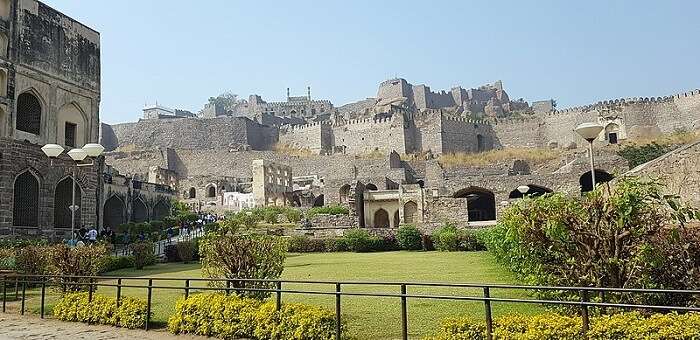
Golkonda Fort is the icon of Hyderabad that was built to protect Hyderabad from the invasion of the foreign army. It is also the place where the mighty Kohinoor diamond was placed. Everything about this fort, the grandiose architecture, its history and mystery, is alluring. You must definitely put this attraction on your itinerary when in Hyderabad.
Entry Fee: Starting at INR 5 for Indans, INR 100 for foreign tourists
Timings: 8 am to 5:30 pm
Best Time To Visit: November to February
Nearest Airport: Rajiv Gandhi International Airport (Hyderabad Airport)
Interesting Fact: When you clap your hands at the bottom of the fort, it can be heard at the top.
35. Bara Imambara, Lucknow
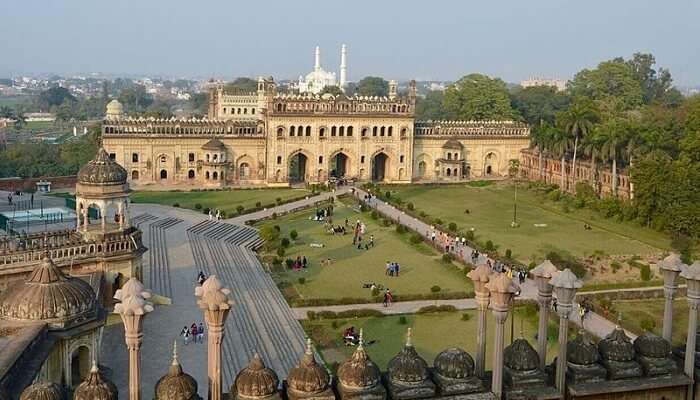
Located in the ‘City of Nawabs’, Bara Imambara is known for its architectural prowess and one of the top historical places of India. It is the world’s largest structure, standing without the support of beams. Asif Imambara constructed it as an important place of worship for Muslims. You will even find an incredible maze of Bhool Bhulaiya inside the premises.
Entry Fee: Starting at INR 25 for Indians, INR 500 for foreigners
Timings: 6 am to 5 pm
Best Time To Visit: October to March
Nearest Airport: Chaudhary Charan Singh International Airport
Interesting Fact: There are 1024 ways to get inside the maze, but only 2
Related Post: Places To Visit In Lucknow
36. Meenakshi Amman Temple, Madurai
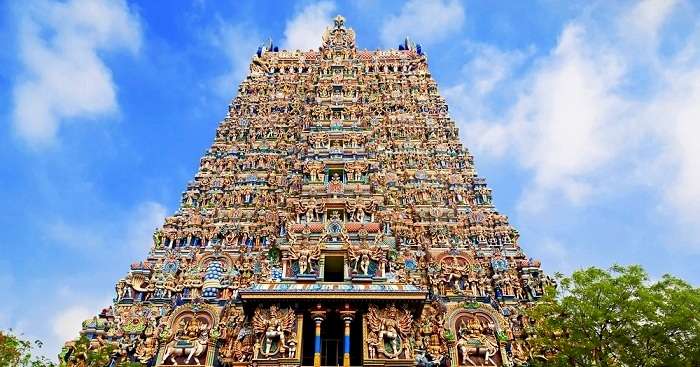
A historic Hindu temple located on the southern bank of the Vaigai River in Madurai, this majestic temple is all about seeking good vibes, positivity and wholesome spirituality. It is dedicated to Parvati, known as Meenakshi, and her spouse, Shiva. Marvel at the magnificent architecture with intricate carvings and admire the great beauty of this temple. It is one of the most famous places in India.
Entry Fee: No Entry fee
Timings: 9 am to 7 pm
Best Time To Visit: October to March
Nearest Airport: Madurai International Airport
Interesting Fact: The intricate architecture of the place is amongst the seven wonders of the world.
37. Halebidu
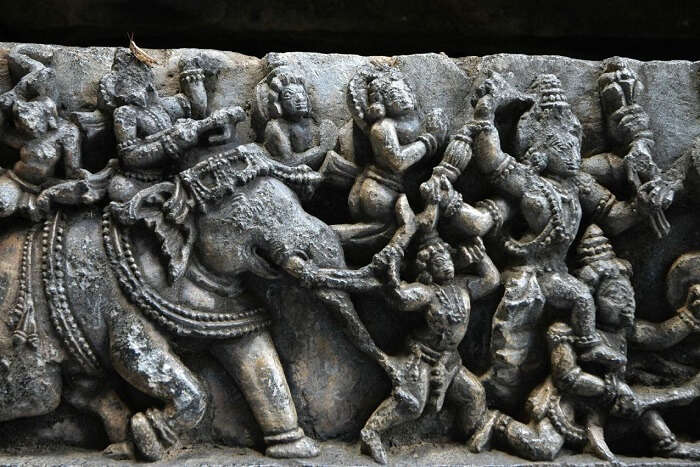
Located in the Hassan district of Karnataka, Halebidu is s a collection of stunning temples with a glorious past, also known as the hidden gem of Indian architecture. If you are in search of some historical places in India, then Halebidu makes perfect sense. It has a magnificent temple complex representing Hoysala architecture. It also houses a number of Jain temples and other significant structures that will evoke a sense of spirituality in you.
Entry Fee: No entry Fee
Timings: 10 am to 5 pm
Best Time To Visit: November to February
Nearest Airport: Kempegowda International Airport (Bengaluru Airport)
Interesting Fact: It was the regal capital of the Hoysala Empire in the 12th century.
Related Post: Best Places To Visit In Karnataka
38. Chittorgarh Fort
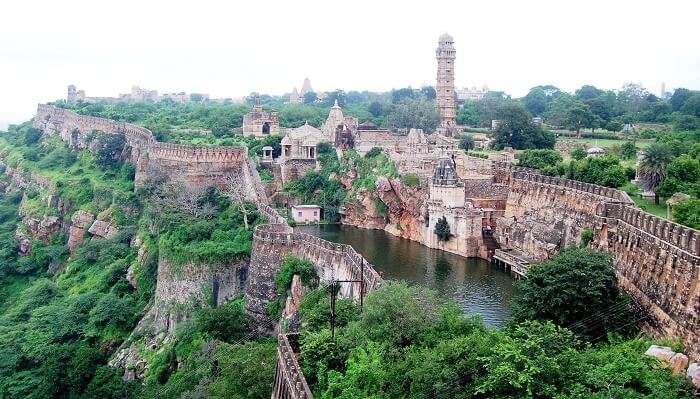
One of the largest forts and historical places of India, Chittorgarh, the capital of Mewar kingdom has a striking attraction known as the Chittorgarh Fort. This magnificent Fort stands tall and reflects the sheer beauty and the glorious past of the Mewar rulers. The fort is spread across 700 acres of land and is always remembered for its glorious battles, especially during the Alauddin khilji and the self-sacrificing Jauhar performed by Rani Padmini.
Entry Fee: No entry fee
Timings: 4 am to 10 pm
Best Time To Visit: October to March
Nearest Airport: Udaipur Airport (Maharana Pratap Airport)
Interesting Fact: It was the place where the famous self-sacrificing Jauhar was performed by Rani Padmini to thwart the conquest of the fort by Alauddin Khilji.
39. Nalanda University

The most popular Mahavihara of the ancient times, it’s a significant Buddhist seat of academic excellence and a modest pligrim centre. Seek spirituality, good vibes, positivity, calm and serenity at this one of the most enchanting Indian historical places.
Entry Fee: Starting at INR 15 for Indians, INR 200 for foreigners, Free below 15 years of age
Timings: 9 am to 5 pm
Best Time To Visit: October to March
Nearest Airport: Patna Airport (Lok Nayak Jayaprakash Airport)
Interesting Fact: The library of the university was so huge that during the attack by Muslims, it took more than 5 months for the library to burn down completely.
Related Post: Places To Visit In Patna
40. Churches & Convents, Old Goa
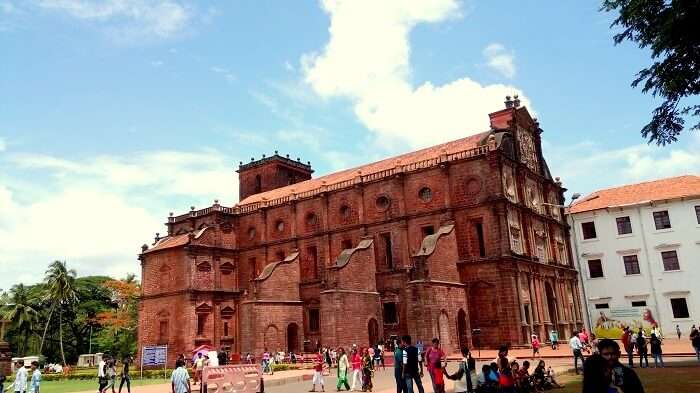
Listed as part of the UNESCO World Heritage Site, this part of Goa marks the presence of the Portuguese, which can be seen in the architecture of several convents and churches that were built in Goa as part of the beginning of Christianity in India. The churches and convents of Goa are some of the most beautiful historical places of India.
Entry Fee: No entry fee
Timings: 7:30 am to 8:30 pm
Best Time To Visit: November to March
Nearest Airport: Goa International Airport (Dabolim Airport)
Interesting Fact: Goa was the capital of Portuguese rule in India and this is part of their heritage.
41. Orchha Fort, Madhya Pradesh
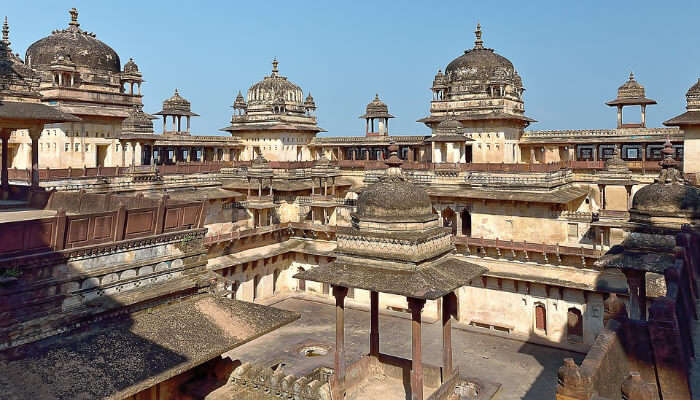
Orchha Fort Complex is a vast archaeological site that consists of several historical monuments – palaces and temple. It is located in Orchha Town of Madhya Pradesh and one of the best historical places in India. The palaces are Raja Mahal , Jahangir Mahal, and Sheesh Mahal. Apart from these, there is a temple and a garden, Phool Bagh located within the Orchha Fort. As a history buff, you should definitely add this place to your list of famous historical places in India.
Entry Fee: INR 10 Onwards (Extra charges for camera)
Timings: 9 am to 6 pm
Best Time To Visit: October to March
Nearest Airport: Gwalior Airport (Rajmata Vijay Raje Scindia Airport) (around 120 km away) or Khajuraho Airport (about 170 km away)
Interesting Fact: A popular ancient temple in Orchha, the Ram Raja Temple is the only temple where Lord Ram is venerated as both a God and a king.
Related Post: Tourist Places In Madhya Pradesh
42. Bhimbetka Rock Shelters, Madhya Pradesh
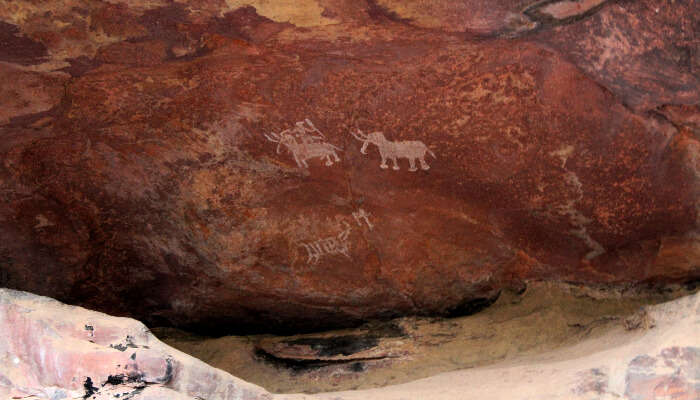
Bhimbetka Rock Shelters in Madhya Pradesh is an archaeological site dating back to the prehistoric age and is one of the most famous places in India. They preserve evidence of the Stone Age in the form of ancient cave paintings. The paintings are believed to be about 30, 000 years old. In 2003, Bhimbetka was recognized as a UNESCO World Heritage Site. Around 500 caves and rock shelters help it qualify for famous historical places in India.
Entry Fee: INR 10 Onwards
Timings: 6:30 am to 5:30 pm
Best Time To Visit: October to March
Nearest Airport: Raja Bhoj Airport (Bhopal Airport)
Interesting Fact: Though the existence of Bhimbetka caves dates back several years, they were discovered only in 1957.
43. Champaner Pavagadh Archaeological Park
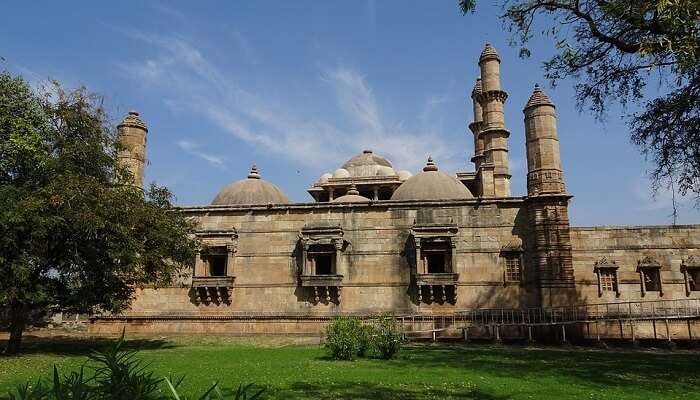
Sitting in Gujarat, Champaner Pavagadh Archaeological Park has found itself a place on the list of UNESCO World Sites. Sitting in the heart of Champaner and being surrounded by Pavagadh Hills, this archaeological park is one of the most beautiful historical places in India and is of mythological significance. One can witness an extensive number of architectural marvels that showcase the styles of Hindu and Islamic designs.
Entry Fee: INR 10 per person Onwards
Timings: 8.30 am to 5 pm
Best Time To Visit: October to March
Nearest Airport: Sardar Vallabhbhai Patel International Airport (Ahmedabad)
Interesting Fact: It is believed that the Pavagadh hill is a chunk of the Himalayas that Lord Hanuman carried to Lanka in the famous Hindu Epic – Ramayana.
You May Also Like To Read: Places To Visit In Gujarat
Thus, set out and explore famous historical places in India that are enriched with culture. Uncover the diversity of this magnificent country and some exquisite architectural beauty. From intricately decorated windows to massive sculptural inscriptions, all these monuments display artistic prowess at its best. Get lost in the ancient world of historic monuments as you explore the dynamic Indian heritage on your holiday trip to India.
For our editorial codes of conduct and copyright disclaimer, please click here.
Cover Image Credit: photoff for depositphotos
Frequently Asked Questions About Famous Historical Places In India
Which is the oldest UNESCO site in India?
There are many UNESCO World Heritage Sites in India, such as Qutub Minar and Ajanta Caves. Qutub Minar is considered the oldest UNESCO World Heritage Site, which dates back to thw 13th century.
Which are famous historical places in South India?
Hampi, Mysore, Badami, and Mahabalipuram are some of the famous historical places in South India. Hampi is an ancient village with Vijayanagara remnants; Mysore is famous for its glorious Mysore Palace; Badami is known for its rock-cut caves; and Mahabalipuram steals the heart with its ornate temples.
Which are famous historical places in North India?
Jaipur, Agra, Delhi are three of the most famous historical places in North India; so much so these three combine to form the popular Golden Triangle tour circuit, beloved by foreigners.
Which are the historical places in Agra, India?
Agra fort, Tomb of Akbar the great, Mariam tomb, Jahangir Palace are some of the historical places in Agra.
What is the biggest heritage of India?
India's biggest UNESCO Site can be viewed in distint ways, such as vast culture and historical significance. As per size, Kaziranga National Park is the biggest site, of about 1,030 square kilometers.
Which is the Indian No. 1 tourist place?
Taj Mahal in Agra is the No 1 tourist destination in India. Among the seven wonders of the world Taj Mahal symbolizes eternal love. It is also an ideal example of Mughal architecture.
What is the oldest historical place in India?
Bhimbetka Caves in Madhya Pradesh is the oldest historical place in India. It is believed that caves are about 30,000 years old.
People Also Read:
Historical Places In Surat Historical Places In Kolkata Historical Places In Delhi

Experience the world through captivating stories of adventure and travel. As a senior content writer, I bring my passion for exploration to life, crafting tales that take you on a journey. With my words, you’ll feel the thrill of discovery and the joy of experiencing new cultures. Let me turn your imagination into a reality with stories that inspire you to explore and embrace the world.

